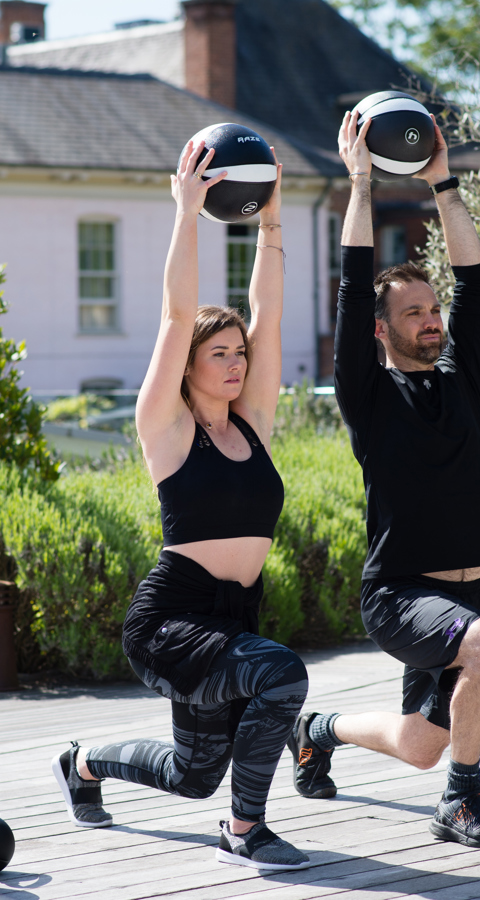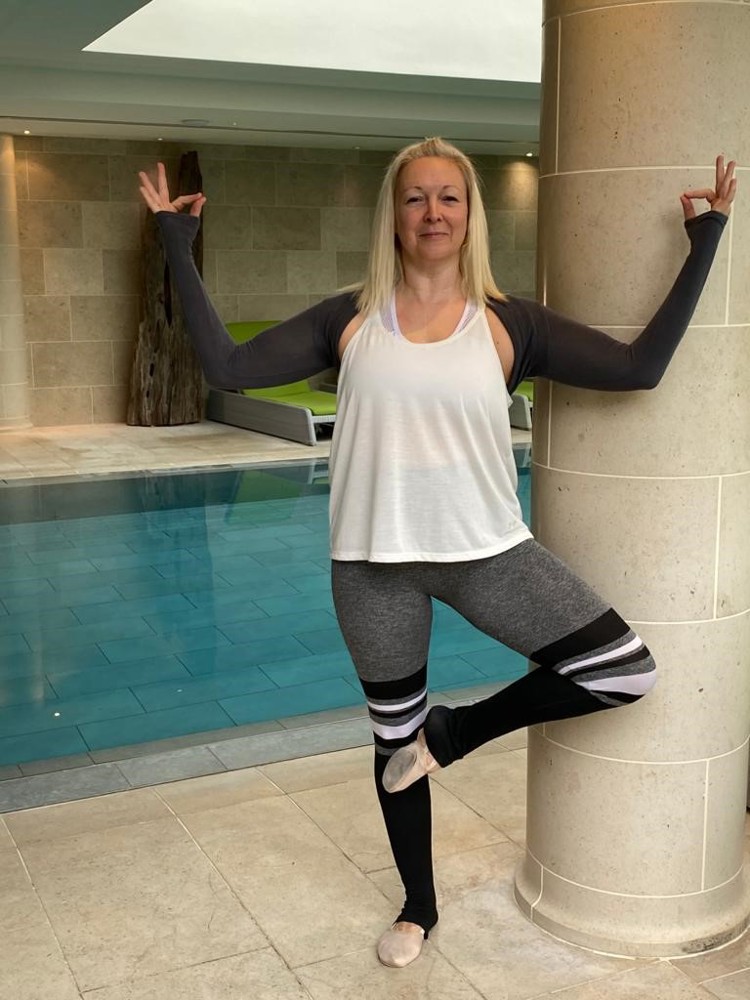
World Water Day with Lime Wood and Belu
To celebrate World Water Day on the 22nd March and our work with our long-standing partners Belu we thought we would take you on a journey through Lime Wood to see how we support the fantastic work Belu do.

I am a Personal trainer, Pilates teacher and Sports therapist, and have been working in the fitness industry for more than 35 years. I am originally from Austria where I initially trained to become a dancer, during this time, I spent time working with my parents who were one of the first people to open health clubs in Austria. On completion of my training, I followed in their footsteps managing one of their clubs. My father now works as a lecturer at an Austrian Sports University and is a successful fitness author who has written over 20 books.
I have worked in all areas of the industry from PT, Rehab, Class instructor to managing corporate wellness to commercial fitness centres. With clients of all age ranges and abilities.

Both my parents turn 80 this year, but that certainly does not stop them from leading an active lifestyle. They visit the gym three times a week to lift weights but are currently enjoying home workouts like many of us!
They frequently increase their resistance and change their workouts to ensure progression, their main aim is to increase their strength and reap the benefits that come with strength training such as better balance, better proprioception, stronger bones, successful weight management, improved functional strength and mobility to name but a few.
Strength training is the lifting, pulling, or pushing of a resistance or weight that you struggle to finish a maximum of 8 repetitions before you take a break for several minutes to let the muscle or body part recuperate to then try again. Over time you will find your body no longer struggles with a certain weight you can start to increase the weights you lift, or the number of reps performed.
Exercises in the gym could be for example chest press, pull downs, rows, squats, deadlifts or lunges or at home you could perform press ups, pull ups, lunges and sit to stand exercises. Please be aware that the exercise selection will depend on your starting ability and can of course be modified as needed. If this encourages you to start, please let it. If you think you don’t have time, let me tell you that as little as 15 minutes in the gym, 2 to 3 times per week is enough!
There is abundance on scientific research that shows great results in less than 8 weeks of starting to train with adequate weights. Not to mention the huge amount of positive side effects such as improved balance, stability, mobility and further a reduction in aches and pains.
There are too many reasons not to start resistance training. Problems such as muscle loss, loss of strength, loss of bone density, the bodies muscle to fat ratio, a better thermoregulation, improved circulation to name only a few can all be improved.
Let’s also mention one subject that is often the reason why we work out, our weight.
Although a combination of cardio and strength training is recommended with correct nutrition of course, however, strength training is in the long term more effective as it increases muscle mass and therefore results in an increased metabolic rate. This means that even at rest you burn more calories than you would without training or just cardio workouts.
Our chronological age has increased dramatically, the average life span of women is now 89, and for men it is 85. This is almost twice as long as 200 years ago and is only likely to increase with more of us leading healthier lifestyles. Now, how do we ensure that we maintain independence throughout our life? Its health and fitness all the way into our increasing lifespan.
Our physical independence as we grow older is mostly a question of strength, not of cardiovascular fitness. In our 30’s to 50s, little changes at that stage, our strength stays relatively the same. In the 6th and 7th decade of our life we are looking at a 15% decrease of strength every 10 years and we can expect a 30% drop from the 8th decade. The amount of muscle fibres reduces as our bodies’ age, this happens from the time we turn 25 unless we train our bodies regularly.
Older people can train and increase their muscles strength very similarly in comparison to younger people. As we age, we benefit from functional strength training either on machines, or with free weights or when training at home with resistance bands and body weight.
‘You are never too old, never too bad, never too late and never too sick to start from scratch once again.’
- Bikram Choudhury
I’d like to finish with a very fitting motivational quote that resonates into my own life. How I treat my body, not just to look my best, too feel my best and to function at my best but also to be able to use it well into my more seasoned years of my life. Let it motivate you too, I really hope it will.
Take care of your body, it’s the only place you have to live.
Please consult your GP and one of our personal trainers before you start your strength programme.

To celebrate World Water Day on the 22nd March and our work with our long-standing partners Belu we thought we would take you on a journey through Lime Wood to see how we support the fantastic work Belu do.
![Nfdc NFDC 2008 0023[1]](/media/r02ebkbt/nfdc_nfdc_2008_0023-1.jpg?width=350&height=350&rnd=133516192015130000)
Embark on a journey from the frosty whispers of winter to the warm embrace of spring at Lime Wood. The New Forest beckons, and as the days grow longer, we eagerly anticipate the magic that unfolds with the changing season.

Gut health is a hot topic and something many of us want to improve, however, it can be a challenge to know where to start. With a degree in Nutrition and a passion for eating healthily to positively impact your overall well-being, our Raw & Cured manager Ria shares her five simple tips to help support good digestive health.